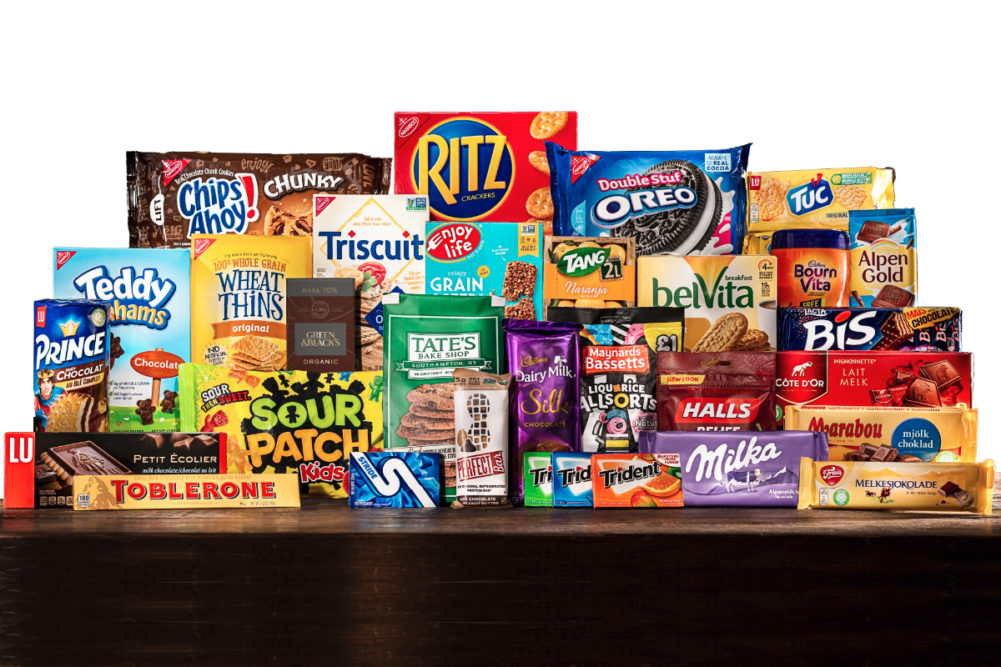CHICAGO – Sales growth at Mondelez International Inc. accelerated in the first six months of 2021, reflecting continued strong demand for categories buoyed during the COVID-19 pandemic together with a partial recovery of categories and channels hurt last year.
After achieving organic sales growth of 3.7% in the first half of 2020, Mondelez International Inc. sales grew even faster in the first half of 2021. In the second quarter ended June 30, earnings per share at Mondelez were sharply higher while adjusted earnings were up only modestly.
Dirk Van de Put, chairman and chief executive officer, said the global snack foods giant enjoyed wide success during the quarter. He said adjusted organic revenue during the first half of 2021 was up 6.2%, versus 5% a year earlier.
“We continue to see strength across the vast majority of our geographies, categories and brands as we remain intensely focused on consistent execution and reinvestment to further strengthen our position,” he said.
Mondelez net income in the second quarter was $1.1 billion, or 77¢ per share on the common stock, up 98% from $544 million, or 38¢ per share, in the second quarter last year. Sales were $6.6 billion, up 12.4% from $5.9 billion in the second quarter a year ago. Earnings were up just slightly from the prior year when adjusted from 2020 for a JDE Peet’s transaction and a larger gain this year on equity method investment transactions, as well as other factors.
With the strong results in the first half of 2021, Mondelez opted to raise its guidance for the full year for organic net revenue growth to at least 4%. The company continues to expect a high single-digit gain in earnings per share.
Numerous tailwinds were cited by Mr. Van de Put in a July 27 conference call with investment analysts. While certain categories such as world travel retail and gum and candy enjoyed strong gains after negative COVID impacts in 2020, he said the company experienced continued strong demand in categories and channels that saw elevated demand last year because of the pandemic.
For many years, Mondelez executives have described a “virtuous cycle” the company pursues in order to sustain long-term growth, and Mr. Van de Put used the term as the source of consistent delivery of “profitable, volume-driven top-line and bottom-line growth as well as good returns to our shareholders.”
Cost inflation was a factor confronting Mondelez and the entire food sector in the second quarter, Mr. Van de Put said. Still, the company managed to boost margins.
“We achieved this through volume leverage, pricing actions and continued cost discipline,” he said.
Strong global sales growth in recent years has been achieved by design, Mr. Van de Put said, noting the company has averaged 4% quarterly sales growth since instituting a new strategy in late 2018.
“We achieved this by pivoting from a cost and percentage margin focus to a volume-led growth and profit dollar focus, by increasing clarity and accountability in the company through a simplified local-first commercial model where decisions are made closer to the consumer, by stepping up the investment levels in our brands and capabilities, and by better aligning our incentives to our strategy to stimulate growth-driving behaviors and a winning culture,” he said.
Digital commerce was a source of growth in the second quarter, rising 14% from a year earlier, Mr. Van de Put said. He added that digital commerce achieved nearly triple-digit growth a year earlier.
In North America, adjusted second-quarter operating income was $441 million, down 6.2% from $470 million in the second quarter of 2020. Sales were $2 billion, up about 1% from the year before. Year-to-date adjusted operating income in North America was $816 million, down 6% from $864 million a year earlier. Sales were $4 billion, up 2.7% from $3.9 billion in the first half of 2020.
Asked about household penetration, Mr. Van de Put said Mondelez globally has increased the figure by 150 million households, a gain the company has retained through the second quarter of 2021.
Even as the company has raised its sales guidance for the full year, Mr. Van de Put said it would be wrong to describe the outlook as clear sailing.
“Globally, we are some distance away from reaching a new normal, and recovery is uneven, largely dependent on availability and adoption of vaccines,” he said. “Comfort and mental well-being remain as important as they have been throughout this pandemic, and that is leading consumers to reach for the snack brands they know and love.”
Responding to a question from an investment analyst, Luca Zaramella, executive vice president and chief financial officer, described logistics and freight costs as a “pressure point” in the second quarter.
“It is, for the most part of it, a phenomenon that we saw in North America, but it is not only limited to North America,” he said. “Ocean freight are really on the rise everywhere, and it is impossible pretty much to cover for a long period of time. And so we are facing pressure particularly in that area. Obviously, given the fact that we have in the US a DSD system, which is a captive system, which is on-lease trucks, etc., we are somewhat more insulated than others, but it is definitely a pressure point.”
Of the North America business overall, Mr. Zaramella noted that while sales slipped slightly during the quarter, revenues a year earlier posted double-digit gains.
For the six months ended June 30, Mondelez net income was $2 billion, or $1.45 per share, up 59% from $1.3 billion, or 89¢. Sales were $13.9 billion, up 10%.






